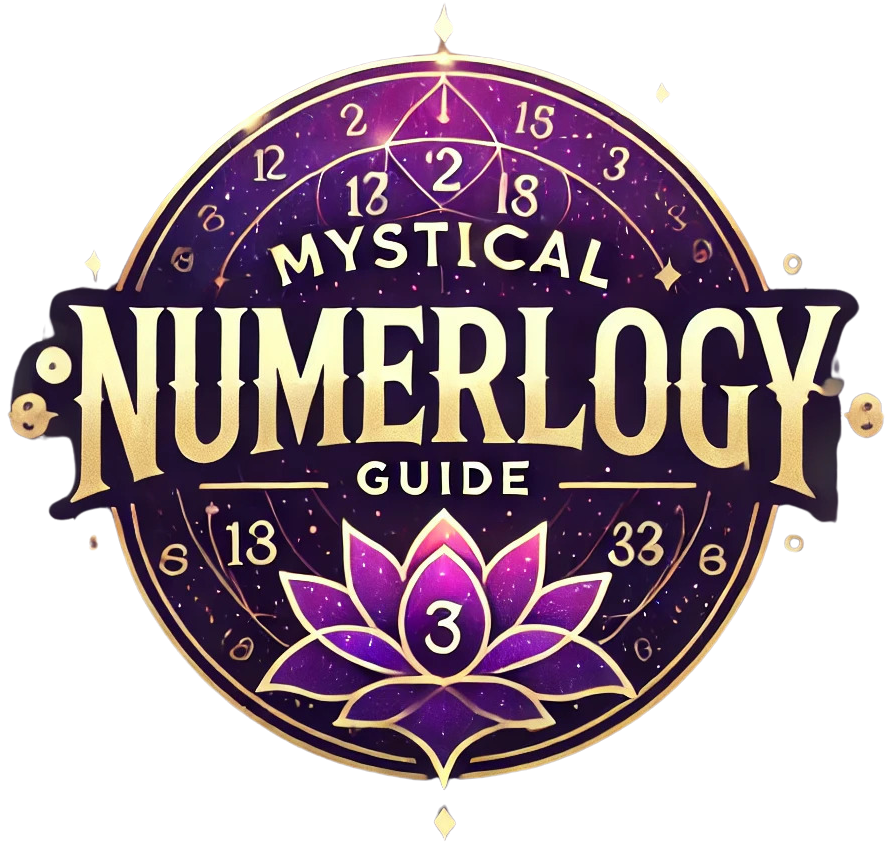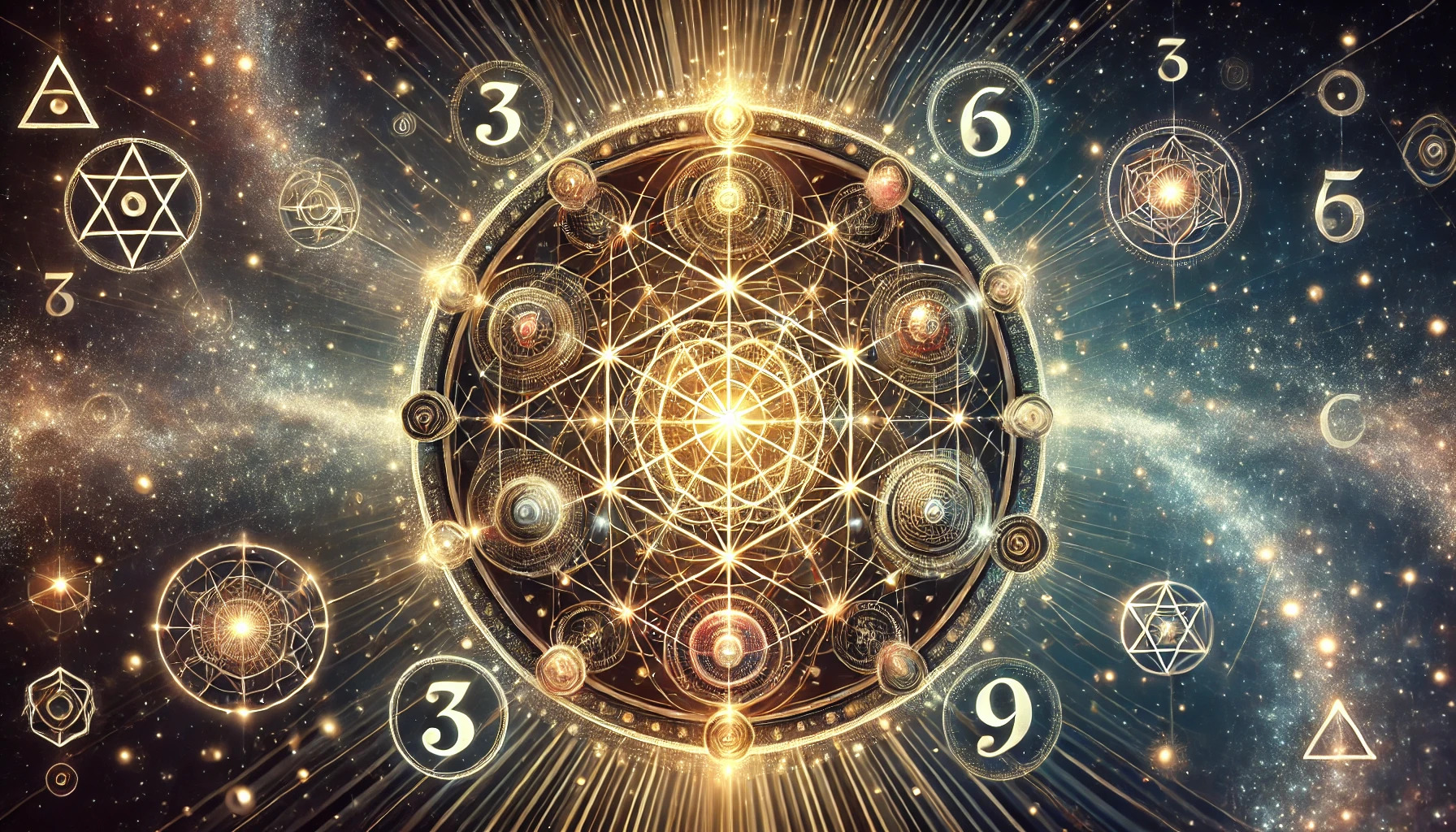Numbers hold a unique place in the world of sacred geometry, representing deeper meanings that go beyond their mathematical value. They serve as symbols that connect the physical world with the spiritual realm, revealing patterns that can guide one’s understanding of life and existence. Each number is infused with characteristics and energies that impact how people perceive their reality.
Exploring the symbolism of numbers in sacred geometry allows individuals to gain insights into their own personal journeys. For many, this connection to numbers can illuminate paths for growth, creativity, and understanding. Whether one believes in numerology or the ancient wisdom of geometry, the exploration of these symbols can unlock valuable lessons.
Understanding these numerical symbols can transform how people interact with their environment. With each shape and number, there are stories and meanings waiting to be uncovered. By diving into this fascinating world, readers can discover resources that may enhance their spiritual practices and everyday lives.
The Basics of Sacred Geometry
Sacred geometry involves shapes and patterns that hold significant meaning in various cultures. These geometric forms often connect to deeper spiritual beliefs and natural principles.
Defining Sacred Geometry
Sacred geometry refers to the symbolic meanings found in specific shapes and patterns. These shapes are seen as reflections of the universe’s underlying structure. Common symbols include circles, triangles, and the famous Flower of Life.
Each shape often represents various concepts like unity, creation, and balance. For example, the circle symbolizes eternity and wholeness. These geometric figures are used in art, architecture, and spiritual practices worldwide. They help individuals connect with deeper meanings and explore their spirituality.
Historical Background
The roots of sacred geometry stretch back to ancient civilizations. Cultures such as the Egyptians, Greeks, and Indians studied these shapes for their philosophical and spiritual dimensions.
In ancient Egypt, geometric designs were evident in temples and pyramids. Greek mathematicians, like Pythagoras, also connected geometry to the cosmos. They believed numbers and shapes revealed the universe’s harmony.
Moreover, sacred geometry appears in religious texts and practices across cultures. The Kabbalah and Hinduism, for instance, use geometric symbols to explain divine truths. These historical ties emphasize how deeply interwoven sacred geometry is within human understanding and spirituality.
Numerology in Different Cultures
Numerology has played a significant role in many cultures throughout history. Different societies have assigned unique meanings to numbers, shaping their beliefs and traditions. The understanding of numbers can be seen in ancient Egyptian beliefs, biblical symbolism, and various Eastern philosophies.
Ancient Egyptian Beliefs
In ancient Egypt, numbers held sacred meanings and were closely tied to their beliefs about the cosmos. The Egyptians believed that certain numbers represented completion or balance.
For example, the number 3 symbolized harmony and wholeness. It often appeared in art, rituals, and architecture, reflecting their understanding of life’s cycles.
The number 7 was significant too. It represented perfection and was often connected to the seven ancient celestial bodies. These symbolic numbers were not just arbitrary; they were deeply integrated into their culture and spirituality.
Biblical Number Symbolism
In biblical texts, numbers frequently appear as symbols that convey deeper meanings. For instance, the number 7 is often associated with divine perfection and completion. This is evident in the creation story, where God created the world in six days and rested on the seventh.
The number 12 also holds significant value, representing God’s people, seen in the twelve tribes of Israel and the twelve apostles.
Another important number is 40, usually associated with periods of trial or testing, as seen during the 40 days of rain in Noah’s story or the 40 years the Israelites wandered in the desert. These numbers contribute to a rich tapestry of spiritual meaning within biblical teachings.
Eastern Philosophies
In Eastern philosophies, numerology often connects with balance and the flow of energy. In Chinese culture, numbers carry both positive and negative connotations. For example, the number 8 is considered extremely auspicious, symbolizing wealth and prosperity.
Conversely, the number 4 is often avoided because it sounds like the word for “death.” This belief heavily influences practices like choosing auspicious dates for events.
In Indian traditions, numerology aligns with astrology and spirituality. Each number is linked to cosmic vibrations, influencing people’s lives and destinies. Thus, numerology serves as a vital part of understanding cultural beliefs across various Eastern traditions.
The Significance of Individual Numbers
Numbers carry rich meanings in sacred geometry, representing deeper concepts and connections within the universe. Each number symbolizes unique traits and spiritual attributes, making them significant in various practices.
The Monad – Number One
The number one symbolizes unity and beginnings. In sacred geometry, it represents the Monad, the first point from which all creation arises. This number stands for individuality and wholeness.
It conveys strength and clarity. The Monad is often depicted as a circle, symbolizing the totality of existence. This circle emphasizes that all things arise from a single source.
It is the foundation upon which all other numbers are built. One serves as a reminder that everything in the universe is interconnected, starting from the same point of origin.
Duality and Two
The number two represents duality and balance. It signifies opposites—such as light and dark or male and female. In sacred geometry, two showcases the importance of relationship and partnership.
As a line, it connects two points, emphasizing connection. The concept of duality invites harmony and cooperation between opposing forces. This number is crucial for building solid foundations and creating balance in life.
Additionally, two encourages reflection and comprehension of contrasts. It leads one to understand that both sides are needed to create unity in diversity.
Three – The Triad
Three embodies the triad, often seen as a symbol of creativity and expression. It is associated with key concepts like body, mind, and spirit or past, present, and future. In sacred geometry, this number represents the balance between these elements.
The triangle, formed by three points, is a fundamental shape in this geometry. It illustrates stability and strength. Each side of the triangle can signify different aspects of life, enhancing personal growth and understanding.
Moreover, three is often recognized as a number of manifestation. It empowers ideas to take shape, leading to action and realization in reality.
The Tetrad – Number Four
The number four symbolizes order and structure. It represents stability through its association with the four elements: earth, water, fire, and air. In sacred geometry, four is often depicted as a square.
A square encompasses balance and foundation. Each corner reflects support that allows for growth and security in life’s endeavors.
This number also relates to the physical world and practicality, making it essential for grounding spiritual concepts. In various cultures, four is seen as a complete cycle, representing wholeness and harmony in nature.
Five and the Pentad
Five is linked to change and adaptability. It embodies the five senses, connecting the physical world to human experience. In sacred geometry, five often takes the form of a pentagon.
The pentagon represents evolution and growth. This shape allows movement, symbolizing freedom and exploration. It encourages individuals to embrace change and new experiences.
Moreover, five is often linked to human connection due to its representation of relationships. It signifies the importance of unity and community. This number fosters creativity and personal discovery.
The Sacred Six
The number six stands for harmony and balance in relationships. It embodies love, responsibility, and nurturing qualities. In sacred geometry, six takes the shape of a hexagon, illustrating symmetry and connection.
The hexagon represents nature’s perfect designs, such as honeycombs in beehives. This number is significant in understanding how interconnected life is. Six promotes cooperation and family values, reinforcing social bonds.
Using six as a foundation emphasizes the importance of creating supportive environments that foster growth. It inspires individuals to seek harmony in relationships with themselves and others.
Geometry of Numbers
The geometry of numbers reveals interesting patterns through sequences and ratios. Two significant elements are the Fibonacci sequence and the Golden Ratio. These concepts are essential for understanding the relationship between numbers and shapes in sacred geometry.
Fibonacci Sequence
The Fibonacci sequence starts with 0 and 1, and each number after is the sum of the two preceding ones. This creates a pattern: 0, 1, 1, 2, 3, 5, 8, 13, and so on.
In nature, the Fibonacci sequence often appears in plant structures, such as the arrangement of leaves or flower petals. This sequence is also linked to aesthetics, as proportions following Fibonacci numbers are found in art and architecture.
Examples include the dimensions of the Parthenon and the paintings of Leonardo da Vinci. The beauty of the Fibonacci sequence lays in its presence across various forms of life and design.
Golden Ratio
The Golden Ratio, denoted by the Greek letter phi (Φ), is approximately 1.618. It can be derived from the Fibonacci sequence, as the ratio of consecutive Fibonacci numbers approaches phi as the numbers grow larger.
This ratio appears in many natural forms, such as shells and hurricanes. In art and design, it is often used to create pleasing compositions.
Notable examples include the Mona Lisa and the layout of the Great Pyramid of Giza. The Golden Ratio draws attention because it represents harmony and balance, influencing both nature and human creations alike.
Practical Applications
Sacred geometry offers many practical applications in various fields, including architecture and modern spiritual practices. Understanding the symbolism of numbers in sacred geometry can help create more harmonious environments and deeper personal experiences.
Architecture and Design
In architecture, sacred geometry plays a key role in creating spaces that promote balance and harmony. Designers often use shapes like the golden ratio and Fibonacci sequence to achieve visual appeal.
Buildings that incorporate sacred geometry often feel more inviting. This can enhance well-being and create a positive atmosphere for those who enter.
Some famous structures, such as the Parthenon and modern eco-homes, use these principles. By aligning designs with nature’s patterns, architects build structures that resonate with the surrounding environment.
Modern Spirituality
In modern spirituality, sacred geometry is used as a tool for personal growth and meditation. Many practices utilize shapes and symbols to enhance spiritual experiences.
For instance, individuals may meditate on the Flower of Life, a symbol made of interlocking circles that represents unity and creation. This practice can deepen one’s connection to the universe and to oneself.
People also incorporate shapes into their living spaces to invite positive energy. Items like geometric crystals or art pieces can elevate spiritual practices at home, promoting tranquility and focus.
Controversial Perspectives
Numbers and their symbolism in sacred geometry can lead to diverse and conflicting interpretations. Some people embrace these ideas passionately, while others approach them with skepticism. This section highlights differing views on the relevance of symbolism and the influence of numerology.
Skepticism of Symbolism
Many skeptics question the validity of interpreting numbers in sacred geometry. They argue that such interpretations lack scientific basis and often rely on subjective beliefs. Critics believe that the meanings attached to different numbers are arbitrary and vary widely across cultures.
They highlight that correlations made between numbers and spiritual insights may arise from chance rather than inherent significance. As a result, this skepticism promotes caution when accepting claims that certain numbers hold mystical power or are universally symbolic.
The Impact of Numerology
Numerology holds a unique place within sacred geometry, influencing thought and belief systems. Supporters claim that numbers help individuals uncover deeper truths and personal insights. For many, numerology serves as a tool for self-discovery and guidance.
However, this belief does not come without controversy. Critics often argue that relying on numerology can lead to misconceptions and misguided decisions. They suggest that it may detract from more practical approaches to understanding life and its complexities.
Despite these opposing views, numerology continues to resonate with many as they search for meaning and connection.

